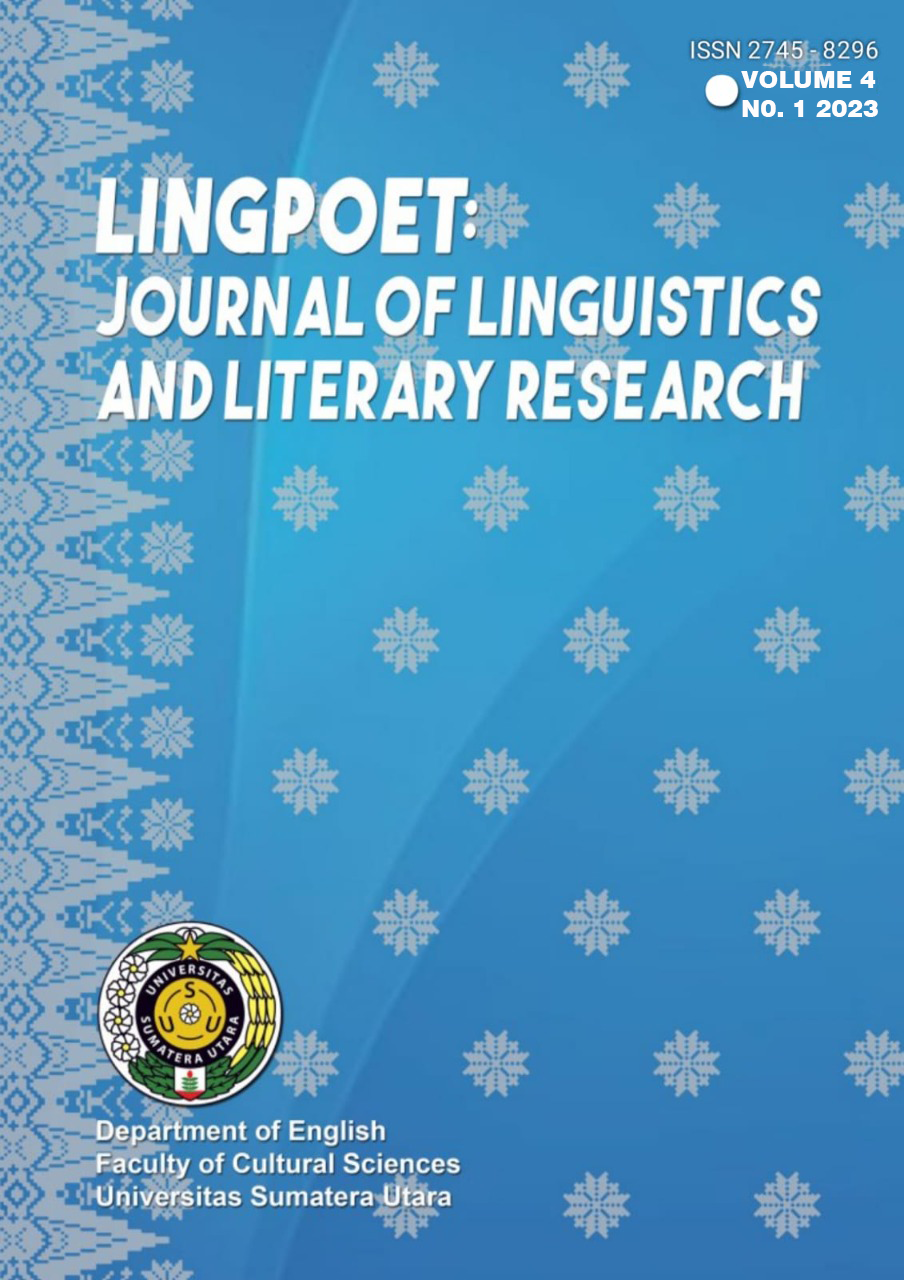Mental Process Found in Donald Trumph’s Speech on Covid 19: Systemic Functional Linguistic Approach
DOI:
https://doi.org/10.32734/lingpoet.v4i1.8932Keywords:
SFL, Transitivity, Mental ProcessAbstract
This research deals with mental process were found in Donald Trumph’s speech. Mental process was used to express people’s feeling, thinking, perceiving shows other desire toward things in life. With these mental productions, humans can express their view, ideas, and a feeling to public through speech. As in Donald Trump’s speech on his presidential speech in addressing the outbreak of COVID-19 in his country. The language used in his speech determines the success of communication with the participant since language express speaker feeling, idea and desire. This research was conducted by using descriptive qualitative research. The data were obtained from Donald Trumph’s speech and source of the data were the script of Donald Trump’s speech on March 11, 2020 about the coronavirus. The data were collected by documentary sheet. The data analysis used interactive model by Miles, Huberman, and Saldana. The findings show that 1) there were 39 utterances that contained of mental process were found in Donald Trumph’s speech, namely 17 (43.6%) for cognition, 11 (28.2%) for desiderative, 7 (17.9%) for affection, and 4 (10.3%) for perception. The highest type of mental process in Donald Trumph’s speech was cognition. It means that Trumph provided his insight to American people about the corona virus in order to make them to be calm in facing the outbreak. It reflected the way of he logically thinks.
Downloads
References
M. A. K. Halliday and C. Matthiessen, An Introduction to Functional Grammar. 3rd edition. London: Arnold, 2004.
M. A. K. Halliday, An Introduction to Functional Grammar (1st ed.). London: Edward Arnold, 1985.
M. A. K. Halliday, The language of. 2004.
M. Zhao and Y. Zying, “A Transitivity Analysis of American President Donald J. Trump’s Inaugural Address,†International Journal of Liberal Arts and Social Science, vol. 5, no. 5, 2017.
Y. Zhang, “Transitivity Analysis Of Hillary Clinton’s And Donald Trump’s First Television Debate,†International Journal Of Applied Linguistics & English Literature, vol. 6, no. 7, pp. 65–72, 2017.
B. Cunanan, “Using Transitivity as a Framework in a Stylistic Analysis of Virginia Woolf’s Old Mrs. Grey,†Asian EFL Journal Professional Teaching Articles, vol. 54, no. 4, pp. 69–79, 2011.
T. Givón, Syntax, An Introduction. John Benjamins Publishing Company, 2001.
D. Ary, L. C. Jacobs, C. Sorensen, and A. Razavieh, Introduction to Research in Education (8th Edition)., 8th Edition. Wadsworth: Cengage Laearning, 2010.
M. Miles and A. Huberman, Qualitative Data Analysis. USA: Sage, 2014.
Downloads
Published
How to Cite
Issue
Section
License
Copyright (c) 2023 LingPoet: Journal of Linguistics and Literary Research

This work is licensed under a Creative Commons Attribution-ShareAlike 4.0 International License.













